5 books about African Languages
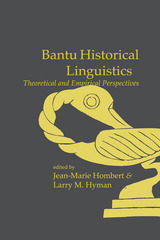
Bantu Historical Linguistics
Theoretical and Empirical Perspectives
Edited by Jean-Marie Hombert and Larry M. Hyman
CSLI, 1999
This collection brings together most of the world's leading Bantuists, as well as some of the most promising younger scholars interested in the history, comparison, and description of Bantu languages. The Bantu languages, numbering as many as 500, have been at the center of cutting-edge theoretical research in phonology, morphology, syntax and semantics. Besides the issues of classification and internal sub-grouping, this volume treats historical and comparative aspects of many of the significant typological features for which this language group is known: vowel height harmony, noun classes, elaborate tense-aspect systems, etc. The result is a compilation that provides the most up-to-date understanding of these and other issues that will be of interest not only to Bantuists and historical linguists, but also to those interested in the phonological, morphological and semantic issues arising within these highly agglutinative Bantu languages.
[more]
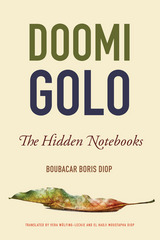
Doomi Golo—The Hidden Notebooks
Boubacar Boris Diop
Michigan State University Press, 2016
The first novel to be translated from Wolof to English, Doomi Golo—The Hidden Notebooks is a masterful work that conveys the story of Nguirane Faye and his attempts to communicate with his grandson before he dies. With a narrative structure that beautifully imitates the movements of a musical piece, Diop relates Faye’s trauma of losing his only son, Assane Tall, which is compounded by his grandson Badou’s migration to an unknown destination. While Faye feels certain that his grandson will return one day, he also is convinced that he will no longer be alive by then. Faye spends his days sitting under a mango tree in the courtyard of his home, reminiscing and observing his surroundings. He speaks to Badou through his seven notebooks, six of which are revealed to the reader, while the seventh, the “Book of Secrets,” is highly confidential and reserved for Badou’s eyes only. In the absence of letters from Badou, the notebooks form the only possible means of communication between the two, carrying within them tunes and repetitions that give this novel its unusual shape: loose and meandering on the one hand, coherent and tightly interwoven on the other. Translated by Vera Wülfing-Leckie and El Hadji Moustapha Diop.
[more]
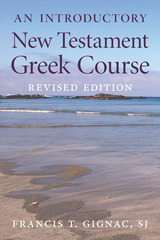
An Introductory New Testament Greek Course, Revised Edition
Francis T. Gignac, SJ
Catholic University of America Press, 2015
Many Christians have the desire to read the New Testament in its original language. Unfortunately, books that introduce the student to New Testament Greek either tend to be long-winded, or overly simplified, or both. In this book, legendary scholar of biblical Greek, the late Frank Gignac provides a straight-forward "just the facts" approach to the subject. In fifteen lessons, he presents the basics of the grammar and the vocabulary essential for reading the Gospels in the original language. All the reader need do is to supply the desire to learn. As Gignac writes, "good luck as you begin to learn another language! It may be sheer drudgery for a while, but the thrill will come when you begin to read the New Testament in the language in which it was written."
[more]
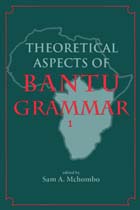
Theoretical Aspects of Bantu Grammar 1
Edited by Sam Mchombo
CSLI, 1993
The study of Bantu languages of sub-Saharan Africa has provided the basis for significant contributions to research in linguistics. In recent years they have been used to advance morphological as well as syntactic theory, and in the study of interface relations in grammatical theory. The papers assembled in this volume, contributed by leading scholars in Bantu and general linguistics, deal with various aspects of the structure of Bantu languages.
[more]
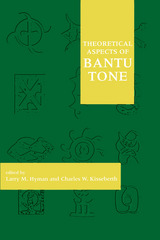
The Theoretical Aspects of Bantu Tone
Edited by Larry M. Hyman and Charles Kisseberth
CSLI, 1998
This book brings together a collection of papers focusing on the tonal systems of the Bantu languages of sub-Saharan Africa. These papers are alike in their attempt to fuse the description of Bantu tone with linguistic theory, but at the same time reflect a range of such theoretical perspectives (autosegmental phonology, lexical phonology, Optimality Theory, Optimal Domains Theory). Much new descriptive material is to be found in this collection, as well as attempts to bring Bantu tonology to bear on critical issues of phonological theory. This collection of papers stands as a testimony to the benefits to be gained from the marriage of theory and description.
This book provides new theoretical insights and analyses of the complexities known to characterize Bantu tone systems. Three of the articles indicate not only how one can apply the concepts of rapidly developing Optimality Theory, but also how the latter can be shaped by the unique features found in these languages. While two of the contributions use standard OT, the third by Cassimjee and Kisseberth provides a detailed introduction of Optimal Domains Theory (ODT) and its application to a number of Bantu tone systems. These and other articles provide new insights into the treatment of long-distance tonal effects, tonal domains, depressor consonants, and other issues known through the autosegmental and metrical literature on tone. The collection features contributors from both sides of the Atlantic and contributions that have both synchronic and diachronic significance for the field.
[more]
READERS
Browse our collection.
PUBLISHERS
See BiblioVault's publisher services.
STUDENT SERVICES
Files for college accessibility offices.
UChicago Accessibility Resources
home | accessibility | search | about | contact us
BiblioVault ® 2001 - 2024
The University of Chicago Press









